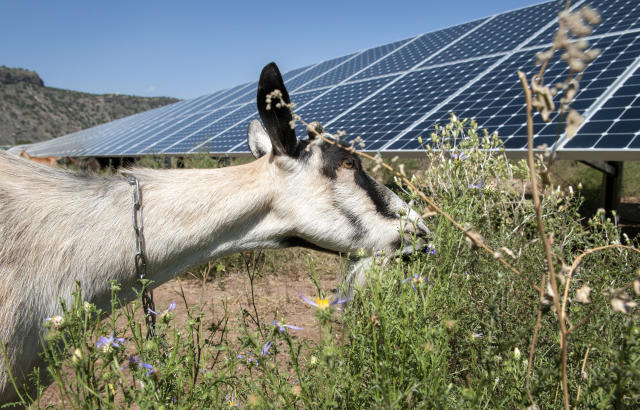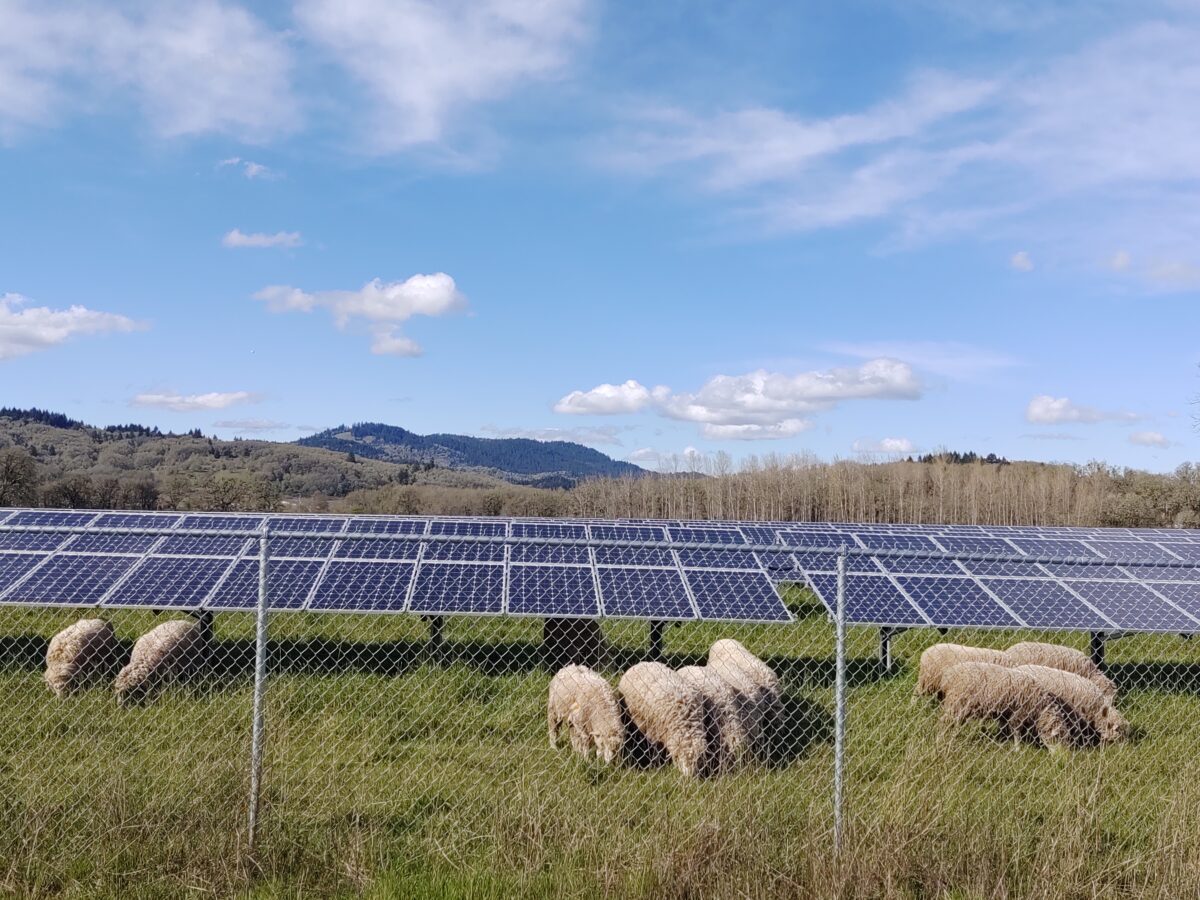A southern Oregon town located due west of Crater Lake National Park nestled between two coastal mountain lines is procuring community solar for its residents.
Project developer and investor SolRiver Capital is helping the town of Myrtle Creek offset its carbon emissions and save money on electricity through the Canyonville Solar project, a 3.2 MW community solar project. Now the site owner is testing several shared land use cases for agrivoltaics, which is the siting of solar projects with agriculture growing or animal raising.
In addition to being the first community solar project in Douglas County under the state’s utility-run Oregon Community Solar Program, energy produced from the project will be made available to residents who don’t own their own home, such as renters and local small business owners.
Canyonville Solar uses single-axis trackers and is expected to produce 5.85 million kWh of clean power upon completion in early 2024. The project is located in PacifiCorp’s southern Oregon service territory. The project is not currently accepting new subscriptions though Sulus Solar is managing subscription intake for the site.
Traditionally, community solar has been made available to utility ratepayers whose home may not be suitable for rooftop solar arrays, as well as low-and-moderate income households without the financial means to procure residential solar otherwise.
Canyonville Solar is forecast to provide 9.77 cents per kWh of bill credit value to subscribers at a cost of 8.8 cents/kWh, providing $78 in first-year savings to enrollees under the program. Enrollment requires a 20-year contract for residents seeking to add community solar savings, according to the Oregon Community Solar Program. Low-income residents whose individual annual income is $41,688 or less, or a family of four’s collective household income is $80,168 or less, can enroll in projects such as Canyonville.
Canyonville Solar is also unique for its initial use of goat grazers for mowing, in addition to other grazing animals. At the inaugural Solar Farm Summit, an agrivoltaics conference held in Rosemont, Ill., experts in solar grazing suggested a best practice of using sheep on solar sites, versus goats, which as goats have developed a bad image for being less cooperative on sites.

Caleb Scott, owner of United Agrivoltaics and vice president of the American Solar Grazing Association, said goats can be unruly on solar projects and are not as great of an operations and maintenance tool compared to sheep grazers. Goats have been known to chew wire harnessing on PV projects and require additional monitoring, he said at the Solar Farm Summit.
Various goat species have been less than ideal partners for weeding and onsite mowing solutions on community solar projects, whereas sheep require very little oversight other than a canine shepherd to navigate herds across multi-hundred acre sites throughout the day, Scott and other panelists said at the recent conference.
SolRiver Capital said the Canyonville project is testing several agrivoltaics solutions on the Douglas County site including:
- Dual Use – Solar & Agriculture. The solar panels will be positioned to enable certain crops to thrive, optimizing land utilization and promoting food production alongside renewable energy generation. By utilizing the same land for both purposes, Canyonville exemplifies self-reliance and sustainability.
- Goats for Mowing. Local goats, and other grazing animals, will be allowed to eat overgrown grass. This helps reduces the need for mechanical mowers, while giving a good meal to the animals.
- Bee Hives. With bees on the decline, SolRiver know bees (and beekeepers) need help. Beekeepers will maintain bee hive boxes on the property, providing benefits to farmers throughout the county.
- Critter-Friendly Fences. Special fences are used to allow small animals such as turtles, squirrels and bunnies to run freely through the site, while larger animals such as cattle are kept from wandering in.
- Biodiversity Enhancement. By cultivating diverse ecosystems, native plants and pollinator-friendly vegetation will be thoughtfully integrated, fostering ecological balance and supporting the flourishing of local wildlife.
Founded in 2016, Denver-based SolRiver Capital is a distributed generation project developer and third-party investor that has funded more than $400 million into more than 60 MW of small-scale solar projects in over 12 states.
This content is protected by copyright and may not be reused. If you want to cooperate with us and would like to reuse some of our content, please contact: editors@pv-magazine.com.









By submitting this form you agree to pv magazine using your data for the purposes of publishing your comment.
Your personal data will only be disclosed or otherwise transmitted to third parties for the purposes of spam filtering or if this is necessary for technical maintenance of the website. Any other transfer to third parties will not take place unless this is justified on the basis of applicable data protection regulations or if pv magazine is legally obliged to do so.
You may revoke this consent at any time with effect for the future, in which case your personal data will be deleted immediately. Otherwise, your data will be deleted if pv magazine has processed your request or the purpose of data storage is fulfilled.
Further information on data privacy can be found in our Data Protection Policy.